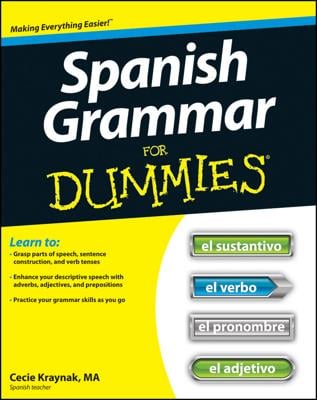- Regular: Follows regular conjugation rules for -ar, -er, and -ir verbs
- Stem-changing: Morphs depending on how you use it in a sentence
- Spelling-changing: Has consonant-spelling changes in some forms to follow pronunciation rules
- Reflexive: Reflects the action back on the subject of the sentence
Present tense conjugation
Here's estar in the present tense; note that four of the forms have required accent marks:| Conjugation | Translation |
|---|---|
| yo estoy | I am |
| tú estás | You (informal) are |
| él/ella/ello/uno está | He/she/one is |
| usted está | You (formal) are |
| nosotros estamos | We are |
| vosotros estáis | You all (informal) are |
| ellos/ellas están | They are |
| ustedes están | You all (formal) are |
-
Nosotros estamos en el cine. (We are at the cinema.)
-
Ella está triste. (She is sad.)
Preterit tense conjugation
In the preterit, estar has an irregular stem: estuv-. Notice also that it doesn’t have the accent marks regular verbs use in the preterit. Take a look:| Conjugation | Translation |
|---|---|
| yo estuve | I was |
| tú estuviste | You (informal) were |
| él/ella/ello/uno estuvo | He/she/one was |
| usted estuvo | You (formal) were |
| nosotros estuvimos | We were |
| vosotros estuvisteis | You all (informal) were |
| ellos/ellas estuvieron | They were |
| ustedes estuvieron | You all (formal) were |
-
¿Estuviste en tu casa ayer? (Were you at home yesterday?)
-
Si. Estuve en casa todo el día. (Yes. I was home all day long.)
Imperfect tense conjugation
You’re off the hook in the imperfect and future forms; estar conjugates normally in these tenses. Check out the following tables and examples.| Conjugation | Translation |
|---|---|
| yo estaba | I used to be |
| tú estabas | You (informal) used to be |
| él/ella/ello/uno estaba | He/she/one used to be |
| usted estaba | You (formal) used to be |
| nosotros estábamos | We used to be |
| vosotros estabais | You all (informal) used to be |
| ellos/ellas estaban | They used to be |
| ustedes estaban | You all (formal) used to be |
-
¿Estaban ustedes acostumbrados a leer? (Were you used to reading?)
-
Si. Estábamos acostumbrados a leer. (Yes. We were used to reading.)
Future tense conjugation
| Conjugation | Translation |
|---|---|
| yo estaré | I will be |
| tú estarás | You (informal) will be |
| él/ella/ello/uno estará | He/she/one will be |
| usted estará | You (formal) will be |
| nosotros estaremos | We will be |
| vosotros estaréis | You all (informal) will be |
| ellos/ellas estarán | They will be |
| ustedes estarán | You all (formal) will be |
-
¿Estarás listo para salir? (Will you be ready to go out?)
-
Sí. Estaré listo para salir. (Yes. I will be ready to go out.)

